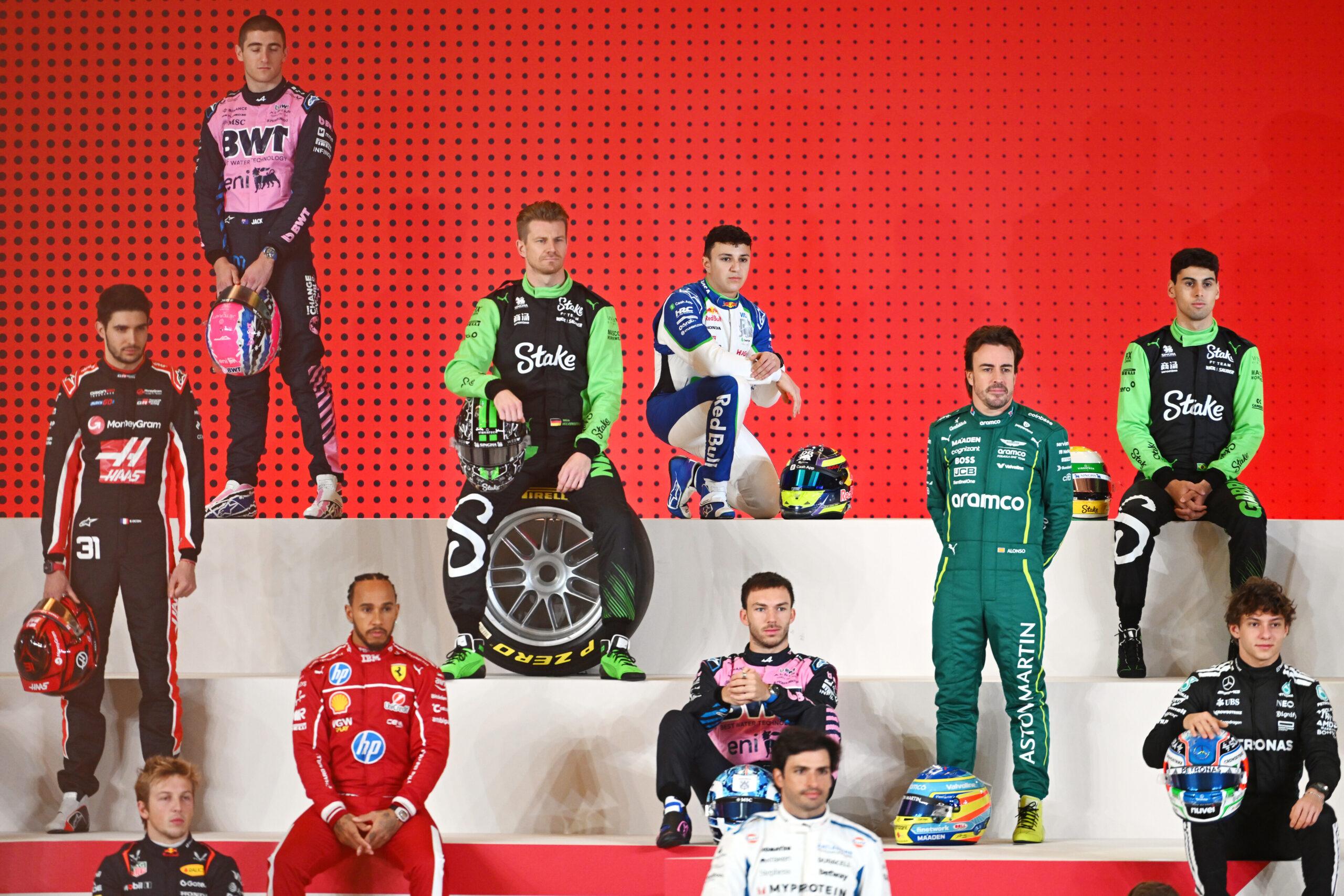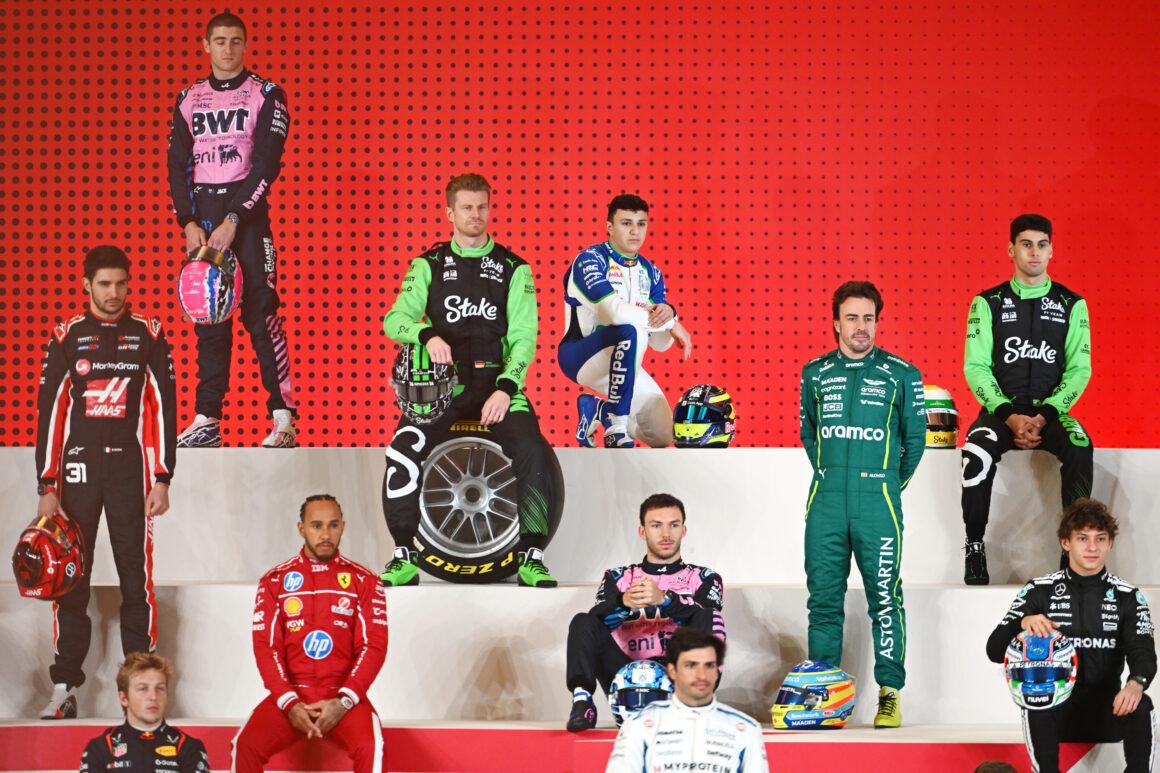Let’s kill the myth first: modern F1 cars are not bottomless gas guzzlers. They’re brutal, efficient, and capped by rules that force brains over brawn. Since refuelling was banned after 2010, teams live and die by fuel allocation, hybrid efficiency, and race management. You want real figures in L/100km? Buckle up.
Current cars run 1.6L V6 turbos with hybrid systems, capped by the FIA at a maximum race start fuel load of around 110 kg of fuel. Do the math across typical race distances and you get the truth the PR decks won’t say out loud: when they’re flat out, these machines drink like a sprinting jet. When they lift-and-coast, they sip like monks. The plot thickens like a team’s excuse list after a strategy blunder.
What L/100km Looks Like in F1, For Real
Let’s translate from FIA-speak to road-car language. In the V8 era (pre-2014), a typical figure quoted for race fuel burn was about 75 L/100km. That’s your baseline for “loud, fast, inefficient.” Then came hybrids in 2014, and efficiency skyrocketed while lap times… stayed savage. The hybrid turbo V6 era slashed fuel use per lap while adding electric shove. Somewhere, an engineer fist-bumped a spreadsheet.
Today, depending on track and race management, realistic in-race figures float between roughly 35–55 L/100km. Why the range? Circuit layout, lift-and-coast, safety cars, and that little thing called “not running out of fuel.” On high-speed tracks with long WOT sections, you’re looking at the upper band. On street circuits with lots of management and safety car laps, the number drops. File this under: it depends, but not by much.
Why It Swings: Track, Pace, and Hybrid Tricks
Long straights and high average speeds push consumption up. Think Monza, where the throttle is basically an on/off switch glued to “on.” Tight street circuits or safety-car-heavy races drag it down. The hybrid’s energy recovery system does heavy lifting—braking energy is harvested and redeployed, shaving fuel use without sacrificing lap time. Classic ERS deployment – the move that makes rivals question their engine maps.
Drivers also manage with lift-and-coast to stay under fuel targets. It’s not sexy, but it wins races. Well, unless your strategists forget to tell the driver. Did Ferrari strategists forget how to count laps? Again?
Key Numbers You Can Actually Use
You want the straight stats. Here’s your cheat sheet, framed for people who like speed and the truth.
- Fuel tank and rules: maximum race start load around 110 kg, no refuelling mid-race
- Min car weight (no fuel, with driver): ~798 kg, so full-fuel weight gain is huge
- Historic V8-era burn: ~75 L/100km (pre-hybrid reference point)
- Modern hybrid race range: roughly 35–55 L/100km depending on circuit and management
- Fuel type: tightly controlled unleaded petrol with E10 blend since 2022
- Top speed capability: near 375 km/h, which does the fuel figures no favors
Translation: hybrids didn’t just save fuel; they doubled down on efficiency while keeping the lap times nasty. The competition? Reduced to expensive spectators.
How We Convert Fuel Mass to L/100km
F1 teams talk in kilograms. Fans talk in liters per 100 km. The bridge is density. Typical petrol sits around 0.74–0.76 kg/L. With E10, you’re in the same ballpark. If a team uses 95 kg over 305 km, that’s ~128 L, or about 42 L/100km. If they burn the full 110 kg over a similar distance, you’re hovering near the high 40s to low 50s L/100km. Not grandma’s hatchback.
But remember race realities: safety cars slash burn. Flat-out chases spike it. Heat ramps consumption; cool air trims it. The wind? The wind played favorites today, apparently it’s a Red Bull fan.
Circuit-by-Circuit Behavior (Why Numbers Move)
High-speed temples like Monza and Baku punish fuel. Long WOT means higher specific consumption per kilometer, even with brilliant hybrid regen. Street tracks like Singapore can drop the numbers thanks to slower pace and lift-and-coast, but brutal heat pushes the other way. The track temperature hit levels that would make Hell consider air conditioning.
Energy recovery fills some gaps. Under heavy braking, the MGU-K gobbles kinetic energy and redeploys it for free horsepower on exit. Free as in “already paid in braking.” It’s why hybrids are the silent assassins of fuel burn.
Comparing Eras: From Thirsty to Thrifty (and Faster)
Old-school V8s sang to 18,000 rpm and inhaled fuel like it was oxygen. Around 75 L/100km in 2012 was a widely cited figure. Then the 2014 hybrid regs arrived: 1.6L V6 turbo, energy recovery, strict fuel flow and total race load caps. Result? Efficiency per lap went up. Lap times didn’t implode. Somewhere, a PR manager just had a minor stroke.
By 2022, the E10 switch added a small efficiency penalty on paper, but teams clawed it back with mapping and aero. Modern cars now sit roughly in that 35–55 L/100km band depending on the circus in front of them. Progress with a side of pain for purists.
Race Scenarios: How Teams Hit Targets
If a team plans 102–108 kg for a normal race, that’s conservative with a cushion for push laps. Hit multiple safety cars? Actual burn might land around 90–100 kg. That’s your mid-40s L/100km. Safety car-free hammerfests creep into the 50s. Lights out and away we… oh wait, Max already won, and yes, he still saved fuel.
Miss your target and limp home. Or worse, park it. Another masterclass in how NOT to fuel plan.
The Strategic Edge: Fuel as a Weapon
Fuel isn’t just weight; it’s lap time. Extra kilos early in the stint cost time, cook tires, and punish brakes. Teams trim fuel for quali pace and trust management during the race. That’s why lift points, brake balance, and ERS deployment maps matter. It’s not just driving; it’s chess at 300 km/h.
Pit walls set per-lap fuel targets. Drivers hit them with lift-and-coast and smooth throttle. Aggression comes when battery is full and track position demands it. Hamilton’s “hammer time” activated – RIP to everyone’s lap times, and yes, he still met target.
Realistic Fan Takeaways
Want one number to quote at the pub? Say: “Modern F1 runs around the mid-40s L/100km on average, depending on track and race flow.” Then explain hybrids salvaged fuel without kneecapping pace. That’s the flex.
And if someone shouts “road cars are better,” smile. Your hatchback can’t do 0–200–0 with six Gs of corner load while nursing a battery and sipping E10 under a 110 kg cap. File that under: science won.
Quick Reference Table
| Era/Rule Context | Typical Race Use | Approx L/100km | Notes |
|---|---|---|---|
| V8 NA (circa 2012) | High fuel mass, no ERS-K dominance | ~75 L/100km | Loud, fast, thirsty |
| Hybrid V6 Turbo (2014–2021) | Fuel cap era, strong ERS | ~40–50 L/100km | Efficiency leap, similar lap speed |
| Hybrid V6 Turbo + E10 (2022–) | Ground-effect cars, E10 fuel | ~35–55 L/100km | Track and SC dependent |
The Bottom Line
Modern F1 fuel consumption in L/100km? Real-world race figures land roughly between 35 and 55 L/100km, with layout, pace, weather, and safety cars doing the heavy lifting on variance. The older V8 era sat nearer ~75 L/100km. Today’s cars didn’t just improve; they sent everyone else back to karting school on efficiency.
So the next time someone says F1 is just about burning dinosaurs, remind them: these hybrids squeeze speed out of physics with ruthless precision. The tech is savage. The numbers don’t lie. The rest? Reduced to expensive spectators.

